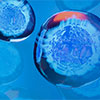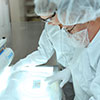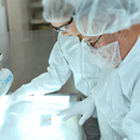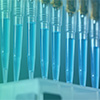Gene Therapy Products & Technology for Effective Research
J.T.Baker® Viral Inactivation Solution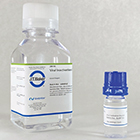
Improve viral inactivation efficiency and control of protein reactive impurities with Avantor’s biodegradable J.T. Baker® Viral Inactivation Solution. mRNA vaccines & therapies – Bioprocessing solutions for the mRNA revolution
Avantor offers solutions for every stage of the mRNA vaccine and therapy manufacturing workflow. Partner with Avantor to support your speed to market. Gene therapy workflowOur experienced team is a trusted partner for scientists involved in breakthrough gene therapy research to advanced gene therapy technology. You can find high-quality gene therapy products and solutions to support every stage of your workflow. Ready to Get Started?Ready to Maximize Production Efficiency? Our Bioprocessing Solutions team can help you streamline your biomanufacturing processes! Get Started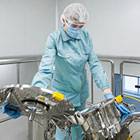
PUPSIT: Exceeding expectations is the standard, not the exceptionAvantor uses PUPSIT globally to reduce filter defects and contamination. We go beyond compliance in every detail, every day. What Is Gene Therapy?Gene therapy is an experimental technique that involves inserting genes into a patient’s cells to treat diseases or disorders without using drugs or surgery. Researchers are studying how to use gene therapy to treat several conditions, including inherited disorders, cancer, and some types of viral infections. Because gene therapy technology modifies a person’s genes, the FDA’s Center for Biologics Evaluation and Research (CBER) tightly regulates gene therapy products. How Does Gene Therapy Work?Gene therapy involves the direct expression of a therapeutic protein or restoration of the expression of an under-expressed protein. Cell and gene therapy use vectors to deliver a payload that can provide therapeutic benefits to patients. Payloads include plasma DNA, short interference and short hairpin RNA (siRNA, shRNA), and micro or messenger RNA. Vectors include viruses (AAV, AV, Lenti, and Retro) and non-viral approaches (cationic lipids and electroporation). Therapeutic payloads can be delivered directly into the patient or a cell provided by the patient or a non-related donor. What Are the Different Types of Gene Therapy?There are two primary types of gene therapy:
Most of the human body is non-reproductive somatic cells. Gene therapy affects only the targeted somatic cells in a patient. Future generations do not inherit alterations in those cells. Germline therapy transforms reproductive cells, such as eggs or sperm, and the results are permanent genetic modifications that impact the genes of future generations. Somatic gene therapy approaches are in vivo and occur within a living organism, while ex vivo takes place outside the body of a living organism. In fact, in vivo and ex vivo are Latin terms that mean “in the living” and “out of the living.” Virus-like particles (VLP) were developed for vaccine products and are now gaining popularity in gene therapy applications and drug delivery vectors to supplement the absence of or a defective form of essential proteins. Depending on their complexity, VLPs can be expressed in either microbial or mammalian expression systems. Advance Your Gene Therapy Progress with AvantorAvantor® can help you maintain the integrity and activity of gene therapy products during upstream and downstream purification through the final fill. Choose from a broad range of materials cell culture components for aseptic fluid transfer supporting “closed-system” cell culture, including:
Ready to Accelerate Discovery?Our Bioprocessing Solutions team can help you choose gene therapy products tailored to your needs to obtain superior results! |

|
Bitte warten Sie...Ihre Daten werden bearbeitet |



